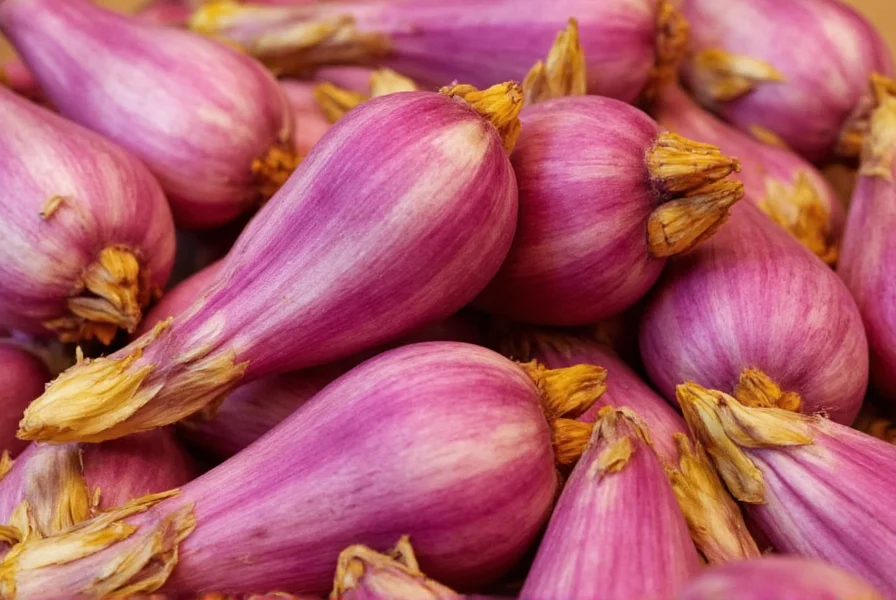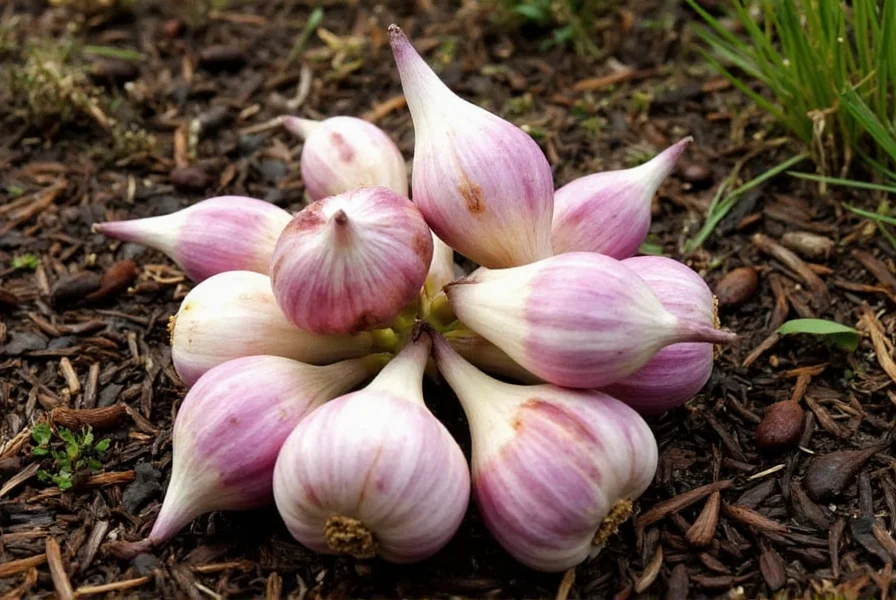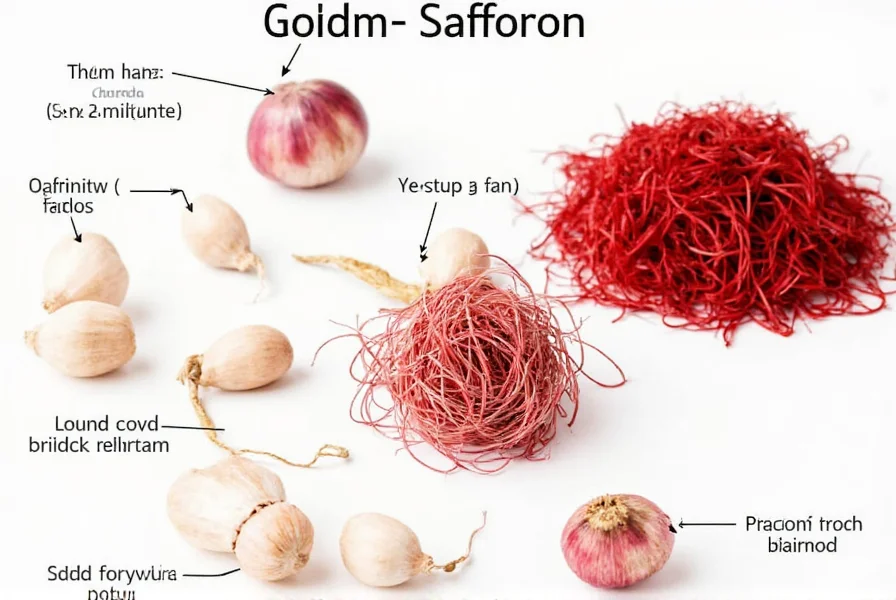Understanding the unique biology of saffron bulbs (Crocus sativus corms) is essential for successful cultivation. These specialized structures store nutrients that fuel the plant's brief but critical flowering period each autumn. When planting saffron corms, gardeners must consider specific soil conditions, planting depth, and climate requirements to maximize yield of the valuable red stigmas.
Understanding Crocus sativus: The Saffron Plant
Crocus sativus, commonly known as the saffron crocus, belongs to the Iridaceae family. This sterile triploid plant cannot reproduce through seeds and relies entirely on human intervention for propagation via its corms. Each saffron corm typically produces one to three delicate purple flowers in mid to late autumn, each containing three crimson stigmas that become the prized saffron spice when dried.
The plant's lifecycle is precisely timed: corms remain dormant during summer, sprout in early autumn, flower within weeks, and then produce foliage that persists through winter before dying back in spring. This unique growth pattern makes saffron cultivation particularly challenging outside its native Mediterranean and Middle Eastern habitats.
Saffron Corms vs. True Bulbs: A Critical Distinction
Many gardeners mistakenly refer to saffron corms as bulbs, but they represent a different botanical structure. True bulbs (like onions or tulips) have layered fleshy scales surrounding a central bud, while corms are solid, swollen stem bases composed of stem tissue. This distinction matters for planting and storage:
| Characteristic | Saffron Corms | True Bulbs |
|---|---|---|
| Internal Structure | Solid stem tissue | Layered scales |
| Renewal Process | Replaced annually by new corms | Outer scales consumed, inner scales grow |
| Storage Organs | Basal plate produces roots | Basal plate with root initials |
| Propagation | Cormels (small corms) | Bulblets or offsets |
When planting saffron corms, this biological difference affects how deeply they should be planted and how they respond to environmental conditions. The corm's solid structure makes it more susceptible to rot in poorly drained soils compared to many true bulbs.
Optimal Growing Conditions for Saffron Crocus
Successful saffron cultivation requires specific environmental conditions that mimic the plant's native habitat. Crocus sativus thrives in regions with hot, dry summers and cool, wet autumns—conditions found in traditional saffron-growing regions like Iran, Spain, and Kashmir.
For gardeners attempting to grow saffron bulbs in non-traditional climates, understanding these requirements is crucial:
- Soil Requirements: Well-draining, sandy-loam soil with pH between 6.0-8.0. Heavy clay soils require significant amendment with sand or perlite.
- Sun Exposure: Full sun (minimum 6 hours daily) during flowering period
- Temperature Range: Summer dormancy requires temperatures above 25°C (77°F), while flowering occurs optimally between 15-20°C (59-68°F)
- Water Needs: Minimal during summer dormancy, moderate during flowering, and consistent moisture during foliage growth
One of the most common mistakes when growing saffron bulbs is overwatering during the summer dormancy period, which leads to corm rot. The plant requires completely dry conditions when dormant.
Planting Saffron Corms: Timing and Technique
The timing of planting saffron corms directly impacts flowering success. In most temperate climates, the optimal planting window is late summer (August-September), allowing corms to establish roots before autumn flowering.
Follow these steps for successful planting:
- Select high-quality corms (minimum 2.5cm/1 inch diameter for best flowering)
- Prepare soil with 30% sand or perlite for drainage
- Plant at proper depth: 15-20cm (6-8 inches) deep in heavy soil, 10-15cm (4-6 inches) in sandy soil
- Space corms 10-15cm (4-6 inches) apart in rows
- Cover with soil and mulch lightly to retain moisture
Smaller corms (less than 2cm) may not flower in the first season but will develop into flowering size over 1-2 years. Proper planting depth is critical—too shallow results in poor flowering, while too deep delays emergence.

Caring for Saffron Plants Through the Growing Cycle
Saffron crocus requires different care throughout its annual cycle. Understanding these phases helps maximize saffron yield:
Summer Dormancy (June-August): Keep soil completely dry. This dry period triggers the flowering response. In rainy climates, consider growing in raised beds or containers that can be moved under cover.
Flowering Period (September-November): Water lightly if rainfall is less than 2.5cm (1 inch) per week. Harvest flowers early in the morning when fully open but before stamens release pollen.
Foliage Growth (November-March): Maintain consistent moisture as leaves develop. Apply balanced fertilizer when foliage emerges to support next season's corm development.
Corm Multiplication (Spring): As foliage dies back, the mother corm produces 2-5 new corms plus numerous small cormels. This natural multiplication allows saffron plantings to expand over time.
Harvesting and Processing Saffron
The true value of Crocus sativus lies in its delicate red stigmas. Each flower produces just three stigmas, which must be carefully hand-picked and dried to create saffron threads.
Follow these harvesting best practices:
- Harvest flowers early in the morning when fully open
- Remove stigmas immediately after picking (don't store whole flowers)
- Use tweezers for precision to avoid damaging the fragile threads
- Dry stigmas within 1-2 hours of harvest using low-heat methods
- Store dried saffron in airtight containers away from light
It takes approximately 150 flowers (450 stigmas) to produce just 1 gram of dried saffron—explaining why it remains the world's most expensive spice. The quality of saffron depends heavily on proper harvesting and drying techniques.

Common Challenges in Saffron Cultivation
Growing saffron bulbs presents several challenges that can impact yield and quality:
Corm Rot: The most common problem, caused by excessive moisture during dormancy. Prevention includes excellent drainage, proper planting depth, and avoiding summer watering.
Poor Flowering: Can result from insufficient summer heat, planting too shallow, or using undersized corms. Select corms larger than 2.5cm for best results.
Pest Issues: Rodents and birds may dig up corms. Use wire mesh barriers during planting. Aphids occasionally affect foliage but rarely impact flowering.
Climate Limitations: In regions with mild winters, saffron may not receive sufficient chilling to trigger proper flowering. Consider growing in containers that can be moved to cooler locations.
Storing Saffron Corms Between Planting Seasons
When expanding plantings or taking a break from cultivation, proper corm storage is essential:
- Dig corms in late spring after foliage dies back
- Clean and dry thoroughly for 1-2 weeks in shaded, well-ventilated area
- Store in breathable containers (paper bags, mesh bags) with dry peat moss
- Maintain storage temperature between 20-25°C (68-77°F)
- Check monthly for signs of rot or desiccation
Properly stored saffron corms remain viable for 2-3 years, though flowering quality typically declines after the first year in storage. For best results, plant corms annually rather than storing long-term.
Expanding Your Saffron Planting
One advantage of growing saffron bulbs is their natural multiplication. Each mother corm produces replacement corms plus smaller cormels that develop into flowering size over time.
After 3-4 years, consider dividing your saffron patch:
- Dig corms in late spring when foliage has died back
- Separate the new corms from the spent mother corms
- Discard any damaged or diseased corms
- Replant the largest corms (2.5cm+) at proper spacing
- Store smaller cormels separately to grow to flowering size
This division process rejuvenates the planting and prevents overcrowding, which can reduce flowering. With proper care, a single saffron corm can produce a productive patch that expands annually.
Frequently Asked Questions
How deep should I plant saffron bulbs for optimal flowering?
Plant saffron corms 10-20cm (4-8 inches) deep, depending on soil type. In sandy soils, plant at 10-15cm (4-6 inches) depth; in heavier clay soils, plant deeper at 15-20cm (6-8 inches). Proper depth ensures temperature regulation and prevents premature sprouting. Shallow planting often results in poor flowering and increased risk of corm damage from temperature fluctuations.
When is the best time to plant saffron corms?
The optimal planting time for saffron corms is late summer (August-September) in most temperate climates. This timing allows corms to establish roots before the autumn flowering period. In regions with early frosts, plant at least 4-6 weeks before first expected frost. Proper summer dormancy followed by timely planting triggers the flowering response in Crocus sativus.
How many saffron threads can I expect from one flower?
Each Crocus sativus flower produces exactly three red stigmas, which become saffron threads when dried. It takes approximately 150 flowers (450 stigmas) to produce 1 gram of dried saffron. The number of flowers per corm varies based on corm size and growing conditions, with larger corms (over 2.5cm) typically producing 1-3 flowers each.
Can I grow saffron indoors or in containers?
Yes, saffron crocus grows well in containers, which offers advantages for climate control. Use pots at least 20cm (8 inches) deep with excellent drainage. During summer dormancy, move containers to a dry, shaded location. In autumn, place containers in full sun. Container growing allows you to control soil conditions and move plants to optimal temperatures, making saffron cultivation possible in non-traditional climates.
How long do saffron corms remain productive?
Healthy saffron corms remain productive for 5-7 years before requiring division. Each year, corms multiply, creating denser plantings that eventually reduce flowering. For maximum yield, divide plantings every 3-4 years by digging up corms in late spring, separating the new corms, and replanting at proper spacing. Well-maintained saffron plantings can continue producing for decades with proper care and division.











 浙公网安备
33010002000092号
浙公网安备
33010002000092号 浙B2-20120091-4
浙B2-20120091-4